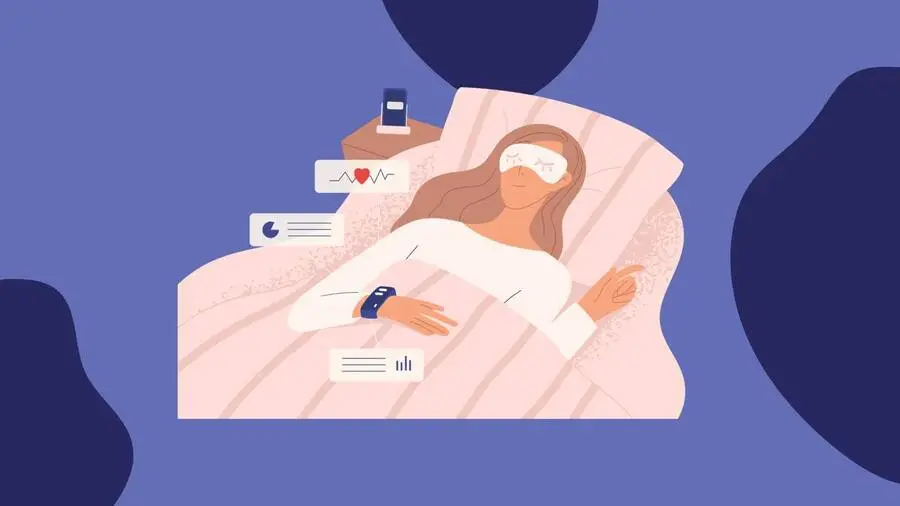Hi friends, today I want to share with you an amazing discovery that will help you learn. I'm talking about biorhythms, the invisible internal rhythms that determine our physical and emotional state. Research shows that understanding and taking biorhythms into account can have a significant impact on our learning. For example, by knowing our physical biorhythms, we can plan physical activities and training at times of peak activity to help us achieve better results. Emotional biorhythms can tell us when it is best to engage in creative tasks or teamwork, given our emotional state. But what are biorhythms, and how can they help with learning? Let's find out together!
What are Biorhythms?
Human biorhythms are the periodic changes that occur in our body and affect our well-being and performance. They can be physical, emotional, and intellectual. Physical biorhythms reflect our physical energy and endurance, emotional biorhythms relate to our emotions and mood, and intellectual biorhythms affect our concentration and cognitive abilities.
Intellectual biorhythms also play an important role in learning. They can guide us to the best time to learn new material, solve complex problems and take examinations. Planning study sessions according to our intellectual biorhythms can significantly increase our concentration and immersion in the learning process.
Of course, every person is unique, and their biorhythms may have some individual characteristics. It is therefore important to carefully observe your feelings and reactions at different times of the day and adapt your learning to your biorhythms.
Types of biorhythms
In the realm of human existence, a tapestry of biorhythms unfolds, weaving together diverse patterns that shape our experiences. These biorhythms, embracing the daily, monthly, and annual cadences, bestow upon us a profound understanding of our being. Guiding us through the ebbs and flows of our days, circadian rhythms harmonize with the gentle rotation of our planet, orchestrating a symphony of sleep, wakefulness, and activity. Beyond the boundaries of a singular day, monthly biorhythms unfurl their vibrant hues, painting the canvas of our emotional landscape. Like celestial dancers, these rhythms sway and sway, casting shadows and radiance upon our inner realms.
Nestled within the tapestry of biorhythms lies other exquisite threads, each contributing to the rich fabric of our lives:
- The physical, vibrant and robust, echo our activity and endurance.
- Intellectual biorhythms, illuminating the realms of cognition and concentration.
- Emotional, whispering tales of inner states and the stability of our moods.
- Intuitive, imbuing us with the profound ability to perceive and intuitively analyze information.
- Social, entwined with our interactions and the symphony of human connection.
- Creative, spark of inspiration and shaping our artistic endeavors.
- Biorhythms of sleep and rest, guiding us toward optimal periods of repose and rejuvenation.
Within the intricate tapestry of these biorhythms, lie the keys to unlocking our potential. Each thread weaves its own narrative, molding the contours of our lives and influencing our learning, growth, and accomplishments. By attuning ourselves to these rhythms and embracing their guidance, we embark on a journey of conscious living, unlocking the door to a more fulfilling and purposeful existence.
How biorhythms affect learning
It turns out that biorhythms can have an important impact on learning. When we take our biorhythms into account, we can maximize learning efficiency and improve academic performance. How does this work? Biorhythms of function are caused by biological rhythms which affect our body condition. For example, daily biorhythms can range from morning people who feel more active and alert in the morning, to evening people who reach a peak of activity in the evening. By taking your circadian biorhythms into account, you can plan your studies and assignments for the better times of the day, when our bodies are most ready to absorb information.
Biorhythms and work efficiency are also linked. When we work in harmony with our biorhythms, we can increase our productivity and efficiency. For example, knowing that we are more concentrated and energetic in the morning, we can schedule the most complex and creative tasks for that time. And during periods of lower activity, we can rest or do more mechanical work.
How can understanding biorhythms improve the performance of pupils and students?
Now let's look at how understanding biorhythms can help improve the performance of pupils and students. A schoolchildren's biological clock has its own characteristics, and knowing about them can help with the learning process.
Children's biorhythms may vary according to age and individual differences. Adolescents, for example, have a shift in their circadian rhythms and often prefer to stay up late into the night and get up later in the morning. With these characteristics in mind, pupils can choose the best times to study and prepare for their lessons, so that they can be more alert and efficient. Biorhythm types also play an important role in improving academic performance. Different types of biorhythms may be active at different times of the day, and by knowing your individual characteristics, it is possible to plan learning activities according to these rhythms. For example, if you have strong morning biorhythms, you may try to do the most challenging tasks in the morning, when your mind is at its clearest and most active.
Thus, understanding your biorhythms and using them in your learning can have remarkable benefits. Knowing our biorhythms can improve our concentration, energy and efficiency, as well as reduce stress and increase motivation. A human biorhythm analyzer helps us to plan our studies more consciously and achieve better results. It is important to remember that every person is unique, and their biorhythms may have different characteristics. So experiment, find the best time to study and rest, and don't forget to listen to your body. I wish you successful learning in harmony with your biorhythms.


-preview.png)